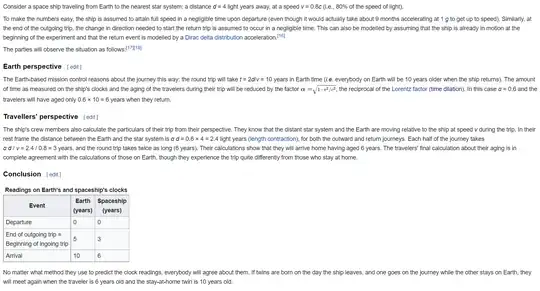https://en.wikipedia.org/wiki/Twin_paradox
this is an article from wikipedia about the twin paradox. an excerpt from "specific example"
How would I calculate the earth years from the traveller's perspective? The calculations are not stated in the article-- if I assume that moving clocks go slower, then from the traveller's perspective he has aged 6 years, shouldn't the earth years be $\frac{6}{\gamma}$ years, which would then be different from the 10 years as calculated in the "earth perspective" part? what am I missing?
